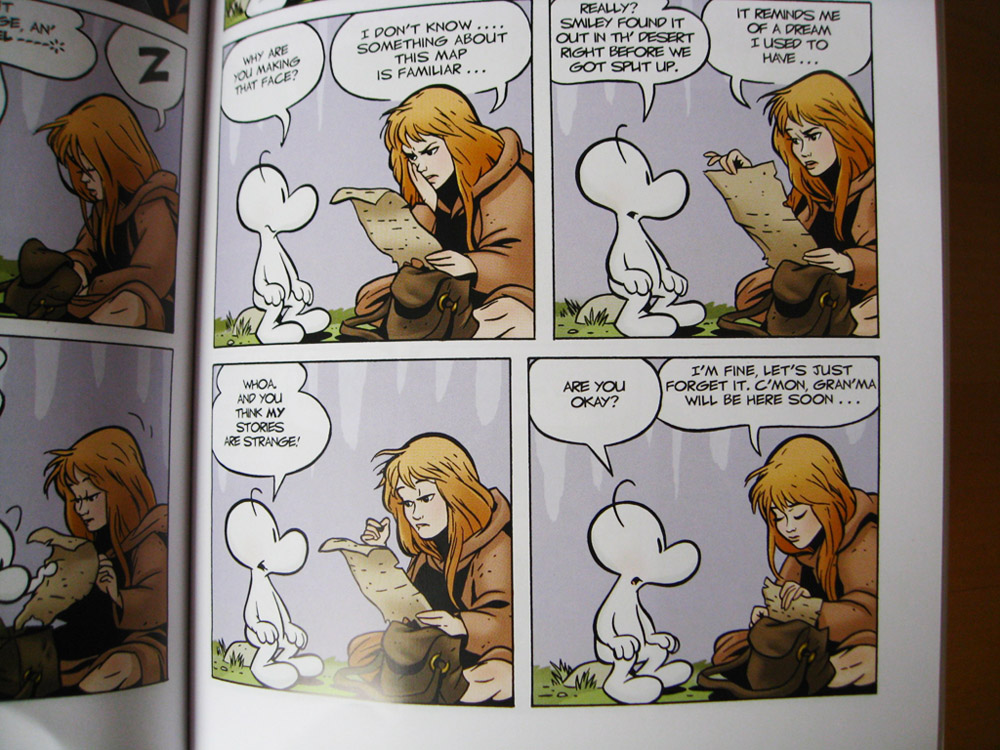Reviewer: Emera
Date read: 11.24.11
Book from: Personal collection
“Of all the things Anya expected to find at the bottom of an old well, a new friend was not one of them. Especially not a new friend who’s been dead for a century. Falling down a well is bad enough, but Anya’s normal life might actually be worse. She’s embarrassed by her immigrant family, self-conscious about her body, and she’s pretty much given up on fitting in at school.
Anya really could use a friend – even a ghost. But her new BFF isn’t kidding about the “Forever” part . . .”
Great characters, great dialogue, fabulous art. Brosgol’s style is elastic and rounded, equally ideal for conveying weightless movement and solid figures; the same could be said of her writing.
The resolutions to Anya’s emotional and social conflicts head towards conventional teen-movie territory, but Brosgol has such a light touch (her sharply contemporary dialogue often comes in handy) that none of the “wholesome realization! reconciliation and mutual understanding!” moments feel too heavy or forced. The climax, in particular, surprises by deliberately backing off of a too-easy, emotionally violent “conclusion.” I love how honest Anya comes to be about her own shortcomings. I’m also rather in love with her acerbic, squinty, spiky-skinny best friend Siobhan:
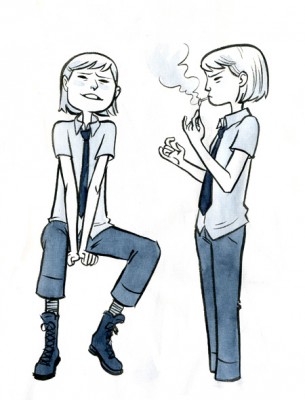
Siobhan, Exhibit A.
I found the comic a clear-eyed exploration of how so much of what makes teen girls unhappy – social pressure, body image, embarrassing family, lack of perspective – can come close to making some into little monsters of selfishness, and how they/we (been there, not so long ago) can come to back away from that brink. All in all: Anya’s Ghost is funny, scary, sad, and beautifully drawn.
(I first found Brosgol’s work, by the way, through the Draw This Dress Tumblr she shares with Emily Carroll, where the two post their lively illustrations of historical and sometimes not-so-historical fashion. Anya actually models a Victorian bathing suit in one post!)
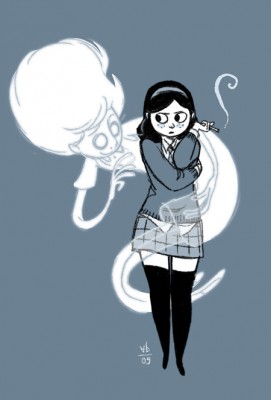
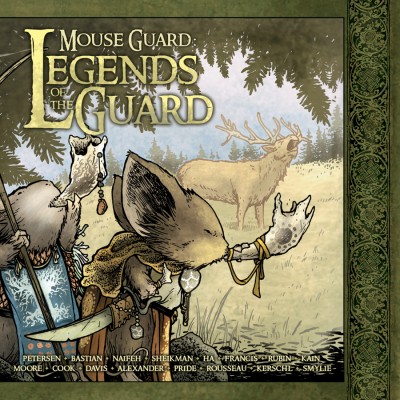
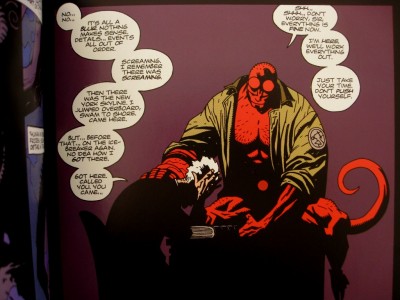
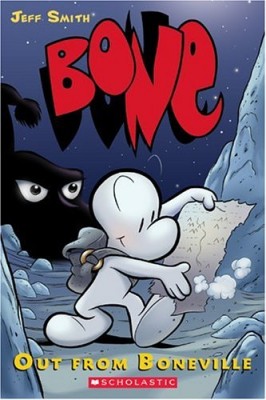 Bone, Volume 1: Out From Boneville
Bone, Volume 1: Out From Boneville